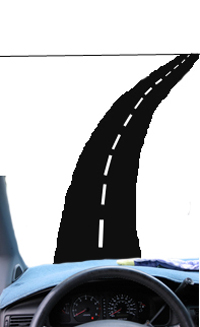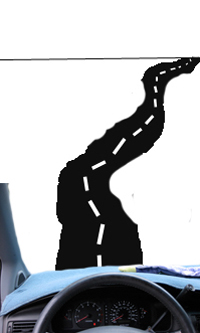Curves
By Don Brett
To be fair or not to be fair, that is the question. (Don Brett in a Shakespearean moment)
Fair: verb, to join so that the external surfaces blend smoothly
Boats historically have been referred to in the feminine. Is this only because there is a collection of lonely men at sea? That’s the easy answer but I think that more importantly, boats, especially traditional designs, are a collection of fair curves and strike a primeval cord within everyone of the feminine. Fair damsels in our oldest stories referred to women of exceptional beauty. In other words her curves were fair, her beauty beyond comparison.
During the building of a boat the shipwrights run their rough calloused hands constantly along the ships curves. What are they doing that for? When a shipwright sights down the boat what he sees and what he is looking at are the curves and what he or she is looking and feeling for is: Is the curve fair or is the curve not fair?
What is “Fair”?
The short answer is no bumps and no holes. Let’s say we are fitting a piece of plywood inside the boat against the hull athwartships (That would be starboard to port 90 degrees to the centerline of the boat). Whichever way you choose to get the curve “right”, let’s say you’re close.
To see if your curve is fair pick up the ply and sight along the cut edge much like sighting a gun. Now let’s pretend you’re in a car driving that curve. In other words, the cut curve is the road and your driving the edge. In a fair curve you would steer your car barely touching the wheel. In an unfair curve you would have to steer right and left to stay on the road.
Fair Curve |
Unfair Curve |
 |
 |
Surfaces are much the same, however sometimes harder to see unless the sight line and the lighting are just right. So when checking a surface for fair, go ahead and run your eye along the edge of the surface and have a good light. The road or surface should have no pot-holes (lows) or speed bumps (highs) to launch your imaginary car into the sky
 |
Fair Curve |
 |
Unfair Curve |
Sliding fingertips along the surface is an excellent way to check for fair. Remember our shipwright constantly running his hands over the ships curves? Well that is what he is doing. He’s checking the surfaces for fair. A flexible strip of wood (baton), something like the old wooden yard stick is also handy for checking for fair. Lay it flat along the surface and see if the wood touches the surface for the entire run.
You might be asking by now why all the fuss about fair and unfair and what good is it to me? I mean the boat floats doesn’t it?
Let’s say you don’t own a boat yet but are all stoked up to get one and you’ve just heard of this really great deal in a rundown marina near the beach the family is swimming at. It’s a beauty, sitting on land all blocked up with tattered tarps gracefully waving in the air and lying on the ground. It’s shiny, it’s blinding white, and it’s got this really cool wind machine mounted on the stern. You’re in love.
The smart thing is to hire a marine architect to “survey” the boat but each time you do that it is a bundle of money you’ll never see again. Here is what you might see and not bother calling an architect at all.
Rule two: (Rule one being keep the water out of the boat.) Unless the boat you’re looking at was made by a house carpenter (and some are) every curve on your beauty will be a fair curve. This is a fact! Believe in it!
OK- that said let’s start our walk around. What we see right off is a fancy sparkling paint job. Why, you can see yourself in it like a mirror but you know there is this wave in the image about mid ships. While sighting along the hull you see that sure enough the surface is smooth but there is a pronounced hollow or valley a good 18 inches across just aft of the chain plates.
That’s funny -the starboard rail has a matching indent directly above the hollow with a couple of screw heads sticking up. Assume that the boat sustained a mighty large blow right there with a high probability of damage on the inside as well. Not so bad. Every boat takes a hit or two right? Of course whoever fixed it did know what they were doing and whoever owns it doesn’t know enough to tell the difference but it’s a good deal. Such a good deal you’re willing to overlook the gouges in the sweep of the bow stem and the bow pulpit’s sort of catawampus slant. You’ve got to wonder what the dock, buoy, tree, boat or whatever got hit looks like. Your floating tank did all right or did it? Ummmm...
Not discouraged yet, we trot by the port side staring at the ground and round the stern to climb the ladder. Nice ladder but right next to where it leans on the curve of the rail you see a chuck missing and the chain plate is twisted. The first thing you see deck side is a puddle of water where the mast sits on the cabin. This would be called a significant hollow in an otherwise fair surface. Testing the cabin top you notice that your weight flexes under you mostly where things are attached. Fair only after you step off it doesn’t count.
There’s something wrong here. Right where that pesky bent starboard rail is the stanchion looks like the tower of Pisa and the deck’s non skid is all smooth there. The twisted pulpit is bugging you too and now you notice a crimp in the tubing near its base. You wonder if maybe you should bail the water from around the mast and decide not to. There is a lock on the hatch so it’s not necessary to prolong the visit and when asked about the boat you answer, ”Yeah, I looked at it but it wasn’t much even at that price.”
The navy way:
- Measure it with a micrometer
- Mark it with a grease pencil
- Cut it with an ax
- Pound it to fit
- Paint it to match
Our fictional boat was repaired much like the navy way and it showed as soon as you could see past the shiny paint. Don’t fix or add to your boat the navy way. Think like a shipwright would. A good thing to keep in mind is that your best work no one will see. A repair that is noticed is a lousy repair and a job not done right.
Tips:
While cutting take the time and draw a bold fair line and for heavens sake don’t cut your carefully drawn line away. Get as close as you dare and continue getting closer and closer to the line with block sanding until the line is split.
For thick woods draw the line on 1/4” pattern stock and spend the time to get it right. Rough cut the wood, hot glue the pattern to your stock and run a bearing bit router along the pattern.
The best way to fair surfaces and for that matter edges is a fast cutting fast moving fairing tool. Even surfaces like a hull repair can be done (now don’t freak out) with a block (dry sponge, construction foam, shaped blocks of wood) and 36 grit sandpaper. The idea is to cut the highs down so fast that the paper can’t go into the lows. Now fill the lows and sand again until all that is left is a scratchy fair surface.
From there it’s just a matter of using finer and finer grits of paper until the scratches are gone and there is a polished surface. The surface that is sanded will take on the shape of the sanding tool so take the time to make the block or blocks the right shape for the fair curve.
If you would like to use the content of these articles, please contact us.
